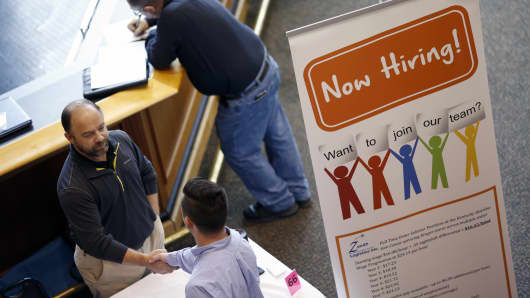The U.S. unemployment rate fell to 4.7 percent in May, even as job growth failed to meet expectations. But does that tell the whole story?
Every month on jobs day, the Labor Department's Bureau of Labor Statistics puts out a ton of employment-related data, each of which tells its own story about the state of the economy. Economists look past the official unemployment rate — known as the "U-3" number — to other metrics that provide more nuanced views of the employment situation.
The U-3 rate is defined as the "total unemployed, as a percent of the civilian labor force," but doesn't include a number of employment situations. A broader figure is the U-6 rate, which many economists rely on as a more accurate portrayal of employment in the country.
The U-6 rate remained unchanged at 9.7 percent in May.





